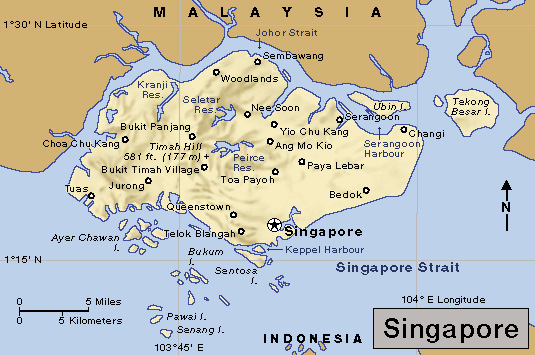Changi, << CHANG ee, >> is a town near the eastern tip of the island of Singapore . During World War II (1939-1945), it was the site of a prison camp complex in which the Japanese held civilians and Allied prisoners of war (POW’s).

Singapore had been a British colony since 1867. During the 1930’s, Japan was aggressively expanding its control in the Pacific. In response, the British fortified Singapore and built military bases at Singapore city and Changi. In early 1942, Singapore fell to advancing Japanese troops. More than 50,000 captured Allied soldiers, mostly British, Australian, and Dutch, were interned at the former British military camp at Changi. By the time the war ended, several thousand other POW’s also had been held at the camp for limited periods of time.
Japanese soldiers, believing surrender to be dishonorable, often treated POW’s with great cruelty. Allied POW’s at Changi, however, fared better than those in other Japanese camps. Changi prisoners were given books from Singapore libraries and allowed to study. They were also permitted to garden vegetables and organize concert parties. Still, many prisoners suffered or died from disease and malnutrition.
The Japanese sent most of the Changi POW’s to work camps in Singapore, Southeast Asia, and Japan. Thousands died working on the Burma Railway and during the Sandakan Death Marches in nearby Borneo . In 1944, as the war worsened for the Japanese, so did conditions for the remaining Changi POW’s. Food rations were cut, and the Japanese enforced strict discipline on the camp. However, the vast majority of Changi POW’s survived their time in the camp.
Today, the Changi Museum commemorates the civilians and soldiers who lived and died in the prison camps. The Singapore Armed Forces occupy parts of the original British Army and Royal Air Force bases. Nearby Changi Airport Singapore, the nation’s main international airport, also occupies part of the former British air base.
